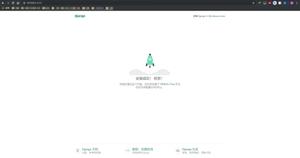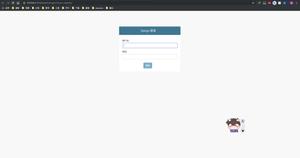Django入门指南10主页的请求测试

注:本文为 《一个完整的Django入门指南》系列教程(中文版)第10节,你可以查看该教程的完整目录。
测试主页
测试将是一个反复出现的主题,我们将在整个教程系列中一起探讨不同的概念和策略。
我们来开始写第一个测试。现在,我们将在boards应用程序内的tests.py文件中操作
boards/tests.pyfrom django.core.urlresolvers import reverse
from django.test import TestCase
class HomeTests(TestCase):
def test_home_view_status_code(self):
url = reverse('home')
response = self.client.get(url)
self.assertEquals(response.status_code, 200)
这是一个非常简单但非常有用的测试用例,我们测试的是请求该URL后返回的响应状态码。状态码200意味着成功。
请求一下主页后,我们可以在控制台中看到响应的状态代码:
如果出现未捕获的异常,语法错误或其他任何情况,Django会返回状态代码500,这意味着内部服务器错误。现在,想象我们的应用程序有100个视图。如果我们为所有视图编写这个简单的测试,只需一个命令,我们就能够测试所有视图是否返回成功代码,因此用户在任何地方都看不到任何错误消息。如果没有自动化测试,我们需要逐一检查每个页面。
执行Django的测试套件:
python manage.py testCreating test database for alias 'default'...
System check identified no issues (0 silenced).
.
----------------------------------------------------------------------
Ran 1 test in 0.041s
OK
Destroying test database for alias 'default'...
现在我们可以测试Django是否在请求的URL的时候返回了正确的视图函数。这也是一个有用的测试,因为随着开发的进展,您会发现urls.py模块可能变得非常庞大而复杂。URL conf 全部是关于解析正则表达式的。有些情况下有一个非常宽容的URL(译注:本来不应该匹配的,却因为正则表达式写的过于宽泛而错误的匹配了),所以Django最终可能返回错误的视图函数。
我们可以这样做:
boards/tests.pyfrom django.core.urlresolvers import reverse
from django.urls import resolve
from django.test import TestCase
from .views import home
class HomeTests(TestCase):
def test_home_view_status_code(self):
url = reverse('home')
response = self.client.get(url)
self.assertEquals(response.status_code, 200)
def test_home_url_resolves_home_view(self):
view = resolve('/')
self.assertEquals(view.func, home)
在第二个测试中,我们使用了resolve函数。Django使用它来将浏览器发起请求的URL与urls.py模块中列出的URL进行匹配。该测试用于确定URL / 返回 home 视图。
再次测试:
python manage.py test```sh
Creating test database for alias 'default'...
System check identified no issues (0 silenced).
..
----------------------------------------------------------------------
Ran 2 tests in 0.027s
OK
Destroying test database for alias 'default'...
要查看有关测试执行时更详细的信息,可将verbosity的级别设置得更高一点:
python manage.py test --verbosity=2Creating test database for alias 'default' ('file:memorydb_default?mode=memory&cache=shared')...
Operations to perform:
Synchronize unmigrated apps: messages, staticfiles
Apply all migrations: admin, auth, boards, contenttypes, sessions
Synchronizing apps without migrations:
Creating tables...
Running deferred SQL...
Running migrations:
Applying contenttypes.0001_initial... OK
Applying auth.0001_initial... OK
Applying admin.0001_initial... OK
Applying admin.0002_logentry_remove_auto_add... OK
Applying contenttypes.0002_remove_content_type_name... OK
Applying auth.0002_alter_permission_name_max_length... OK
Applying auth.0003_alter_user_email_max_length... OK
Applying auth.0004_alter_user_username_opts... OK
Applying auth.0005_alter_user_last_login_null... OK
Applying auth.0006_require_contenttypes_0002... OK
Applying auth.0007_alter_validators_add_error_messages... OK
Applying auth.0008_alter_user_username_max_length... OK
Applying boards.0001_initial... OK
Applying sessions.0001_initial... OK
System check identified no issues (0 silenced).
test_home_url_resolves_home_view (boards.tests.HomeTests) ... ok
test_home_view_status_code (boards.tests.HomeTests) ... ok
----------------------------------------------------------------------
Ran 2 tests in 0.017s
OK
Destroying test database for alias 'default' ('file:memorydb_default?mode=memory&cache=shared')...
Verbosity决定了将要打印到控制台的通知和调试信息量; 0是无输出,1是正常输出,2是详细输出。
下一节:Django入门指南11-静态文件的设置
以上是 Django入门指南10主页的请求测试 的全部内容, 来源链接: utcz.com/z/521573.html




